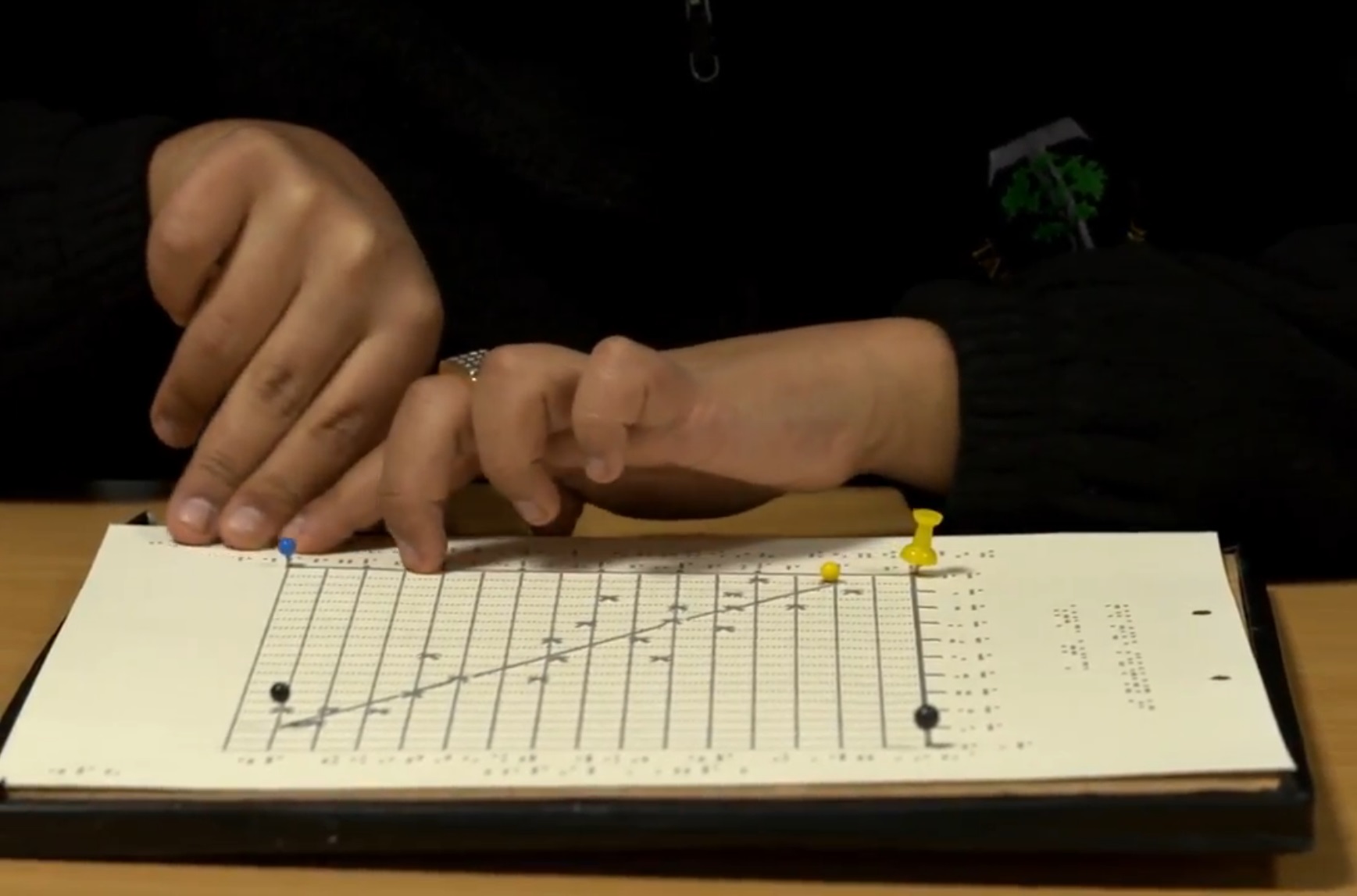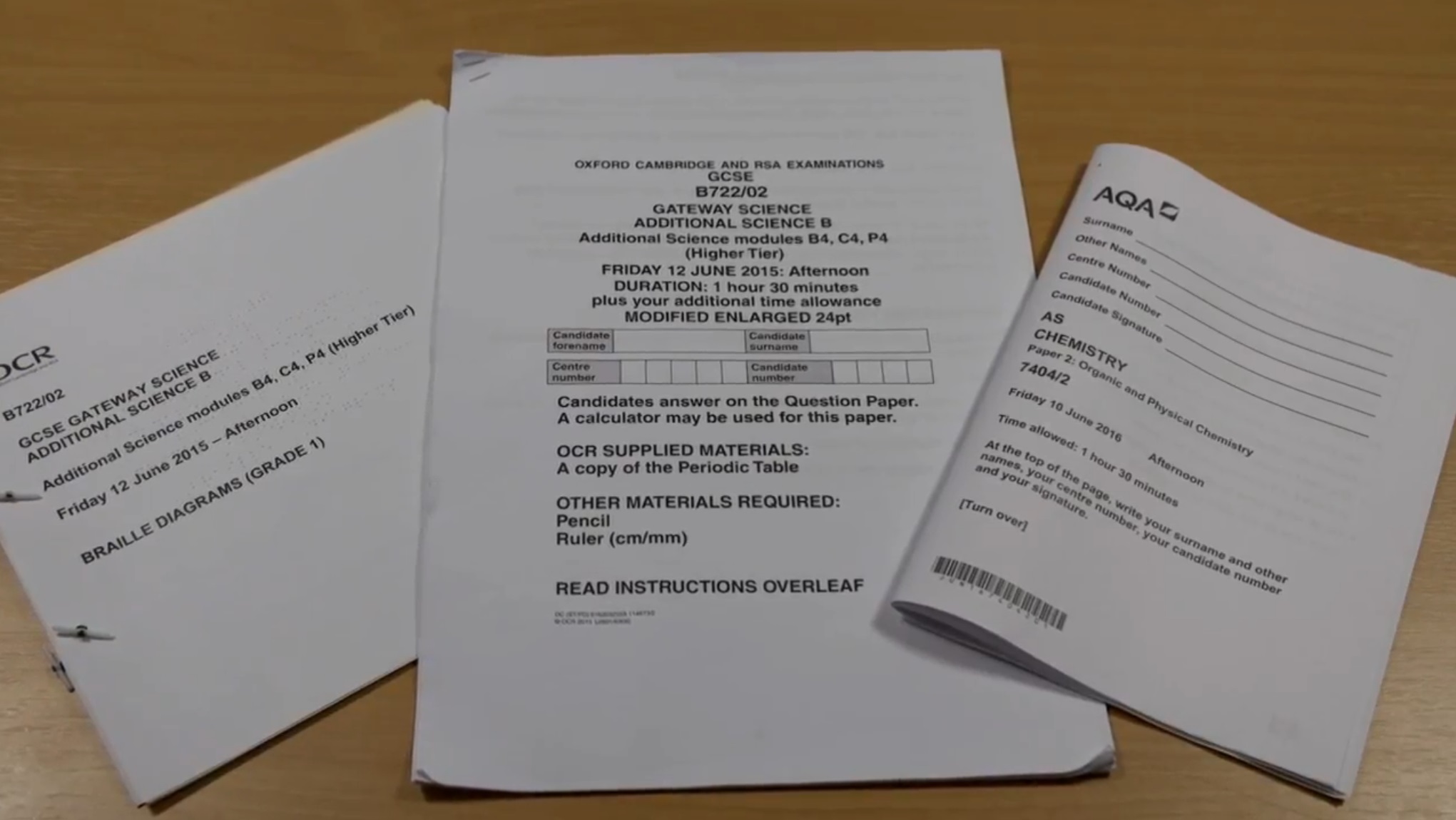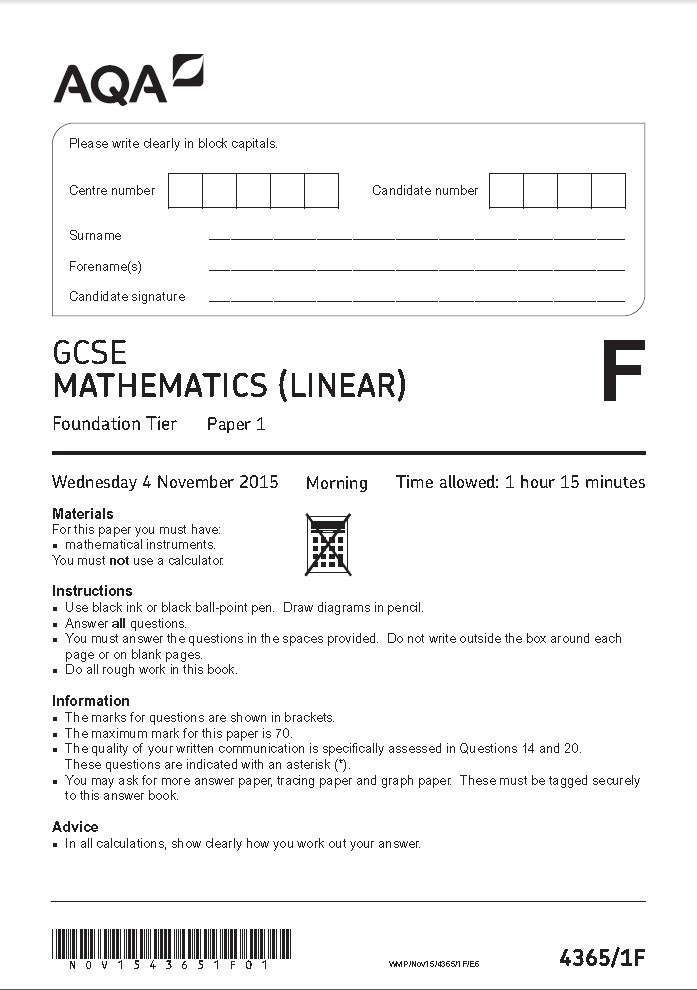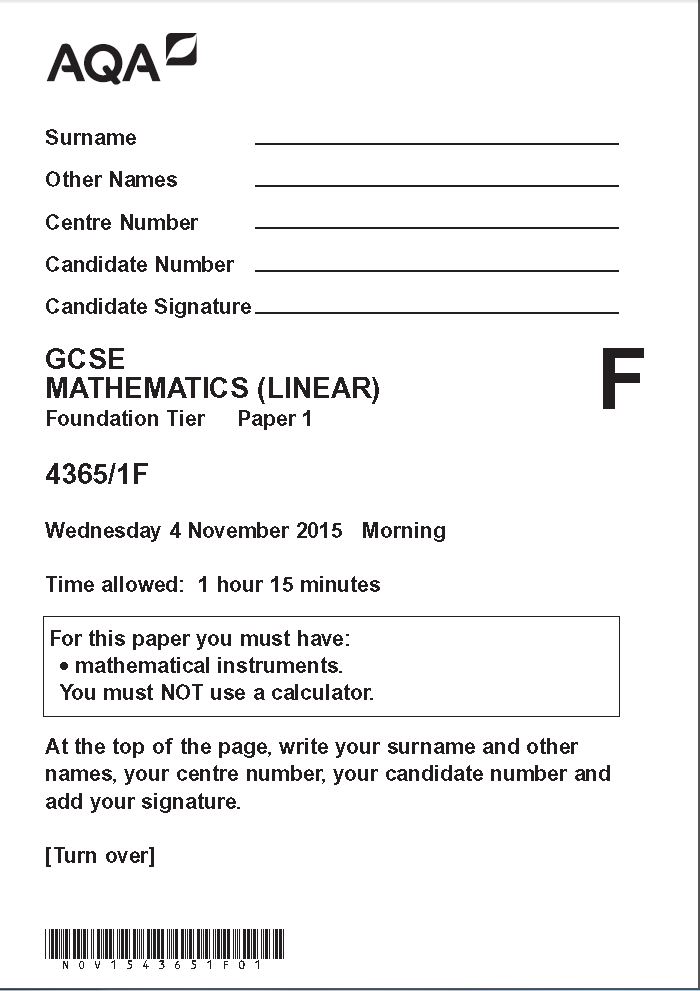- Candidates should be able to use their normal working methods in tests and examinations wherever possible.
- Modification is a right for those needing this access arrangement as a reasonable adjustment.
- Modified questions should require the same subject skills, knowledge and concepts as the original question.
- Technical or subject-specific terminology cannot be modified.
- The awarding bodies have similar approaches to providing modified papers.
Candidates who have been introduced to the sorts of modifications used in exam papers and who have learned to use them in class and for homework, are likely to become more familiar with the conventions used and feel more confident when they approach real examinations.
This activity looks at the types of modifications that can be expected and the principles involved in the modification process.
The later activities describe more detailed aspects about how various question types may be modified for HI and VI candidates.

The guiding principle is that a candidate should be able to use their normal working methods in tests and examinations wherever possible. However, it is also important that modifications to papers do not interfere with the knowledge, understanding or skills which are being assessed.
Which of these approaches to modification are reasonable?
Select all of the correct statements.
Candidates
Modification should not be regarded as a concession but as a right for those needing this access arrangement as a reasonable adjustment.
These learners include those who are deaf, visually impaired, may have dyslexia, speech, language and communication needs and many others.
Consider the following statement.
The purpose of modifying the form or language of a question is to make it easier for candidates with an impairment.
Do you agree?
Select 'reveal' to see an expert view.
The feedback will appear after the reveal button.
Subject-specific vocabulary
Vocabulary that is technical or subject-specific cannot be modified; the candidates do need to know the technical and subject-specific language. The understanding of these specialist terms are the responsibility of those teaching the subject.
Making questions accessible
Questions are only modified when it is necessary to make them accessible. It is not an opportunity to ask a different question or 'improve' the design. Essentially the task should be the same as on the paper taken by other candidates.

When producing a modified question the following principles are applied.
- The amended question must assess the same skills, knowledge and concepts as the original question in the print paper and enable the candidate to meet the same assessment objectives.
- The question should be of an equivalent level of difficulty as the original.
- Any alteration should preserve the balance of the original examination paper in terms of both the content and the weighting of questions.
- A modified question should not require candidates to spend a disproportionately large amount of time to gain relatively few marks.
- Where modification of an existing question is not possible, the modifier may propose a replacement question which attempts to meet the same assessment criteria for approval by the awarding body.
The modification of a paper may lead to the need to amend the overall instructions of the paper or the instructions for individual questions.
Consistency from year to year is of importance, particularly because candidates may make use of past papers for practice. Where possible, modifiers will refer to past papers as a basis for making their modifications.
Modifier skills
Modification requires subject knowledge as well an understanding of the needs of candidates with sensory impairment along with knowledge about the literacy format that they are modifying to eg modified language, braille, diagrams etc.
Modifiers work with the awarding body about what is and what is not permitted.
Frequently used modifications
As you may have seen when looking at access arrangements, there are several 'common' formats for modified papers that are provided on request by the awarding body.
- Modified language
- Unmodified enlarged
- Modified large print
- Braille
- Screen reader format

Modified language
Many people do not realise that congenital deafness is often accompanied by a linguistic problem. Hearing children acquire their native language through listening and constant auditory enforcement. For hearing children, reading is a visual symbol system of the spoken language they have already acquired. Some deaf children may be slower at learning to read and may, at the time of taking GCSE examinations, have a much lower reading age than that which may be expected.
Areas of difficulty may include (but are not limited to):
- vocabulary difficulties
- abstract terms
- idiomatic words and phrases
- knowing only one word for a concept
- taking literal meaning of words
- finding Anglo-Saxon words easier than ones derived from Latin
- problems with wordy often Latinate phrases
- complex structure of sentences.

By modifying the language in examination papers, the material is made more accessible. This is done by changing the wording and layout of questions and instructions. It means that weak readers are not penalised in an examination where reading is not the focus of the assessment.
Those producing modified language papers will often:
- Break down long sentences
- Try to put verbs next to their subjects,
- Put sentences and clauses into the correct temporal sequence
- Use active rather than passive constructions
- Locate the question separate to the information
- Break out and separate multiple questions
- Provide clear instructions of what is expected in terms of the response and the associated marks
- Replace or remove confusing or distracting phrases
Compare these extracts from a GCSE History examination past paper:
How has the paper been modified?
The feedback will appear after the reveal button.
Unmodified enlarged (UE)
The paper is enlarged from A4 to A3. The content and presentation of questions is unchanged from the original. Please note that B4 enlargements which are provided for Key Stage 2 tests are not available for general qualifications.
Schools and colleges can also apply for permission to open papers one hour early in order to produce enlarged copies of standard papers for candidates who do not require modified presentation. Enlarging an ordinary paper to A3 size usually results in a print size of around 14 point, depending on the size of the original print.

Modified large print (MLP)
A4 modified enlarged (18 point bold).
Here the layout and presentation of the standard paper is simplified to remove elements of visual complexity, without changing the level of difficulty of the content. Pictures and diagrams may be removed or redrawn to make them more visually accessible.
The standard font used in modified enlarged papers is Arial.
A3 modified enlarged (24 point bold).
The presentation here is the same as the A4 modified enlarged paper but the paper is then enlarged to A3 size to provide a larger print size.
A3 modified enlarged (36 point bold).
These papers are modified along the same lines as the previous two formats but provides a larger print size. All the Awarding Organisations offer 36 point papers but they may not be able to provide them for all subjects, especially those involving complex diagrams.

Compare these extracts from a GCSE Mathematics examination past paper:
How have the instructions and data sheet been modified?
The feedback will appear after the reveal button.
There are some straight forward general points to be considered when making a paper as clear as possible.
Font
- Use fonts that have clear shapes of letters and numbers
- Font type and size need to be consistent throughout the paper
- Use at least 12 point for main text. No part of the paper should be less than 10 point.
- Use bold to highlight specific words and phrases.
Spacing
- Long lines of text set closely together are difficult to read. The longer the lines, the more important the amount of space between them becomes.
- Double spacing between statements or questions and treble spacing between sections helps to improve legibility.
Diagrams, pictures and photographs
- Ensure good contrast and definition.
- Reproduce at a size that ensures relevant points and text are easily seen.
- Ensure titles and labels are clear and set against a contrasting background.
- Lines and arrows joining labels to diagrams can be confusing. A key might be clearer.
Layout
- Consider the structure of a page. Use headings and sub-headings that cue readers in to the content of the text.
- Long or complex sentences are better split up by using bullet points or numbered lists.
- Use features such as bold, italic or boxes to provide reading cues and to focus attention.
- Instructions should be clear. They should be separate from and precede the question. They should be repeated when necessary.
- It may help to use a new line for a sentence containing a new idea.
- Weak readers are helped by regular spacing. Thus 'align left' and 'ragged right' is better alignment than 'justify'.
- Put text close to relevant pictures/diagram to enable candidate to relate the two effectively.
- A question should begin and end on the same page or at least on the same double spread.
Past papers are not always available in every format for a particular examination but where this is the case awarding bodies should be able to advise you how to find past papers set out in a similar style.
For GCSE past papers in modified large print or braille follow the appropriate link below: